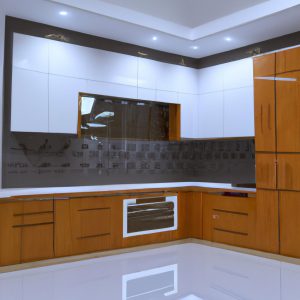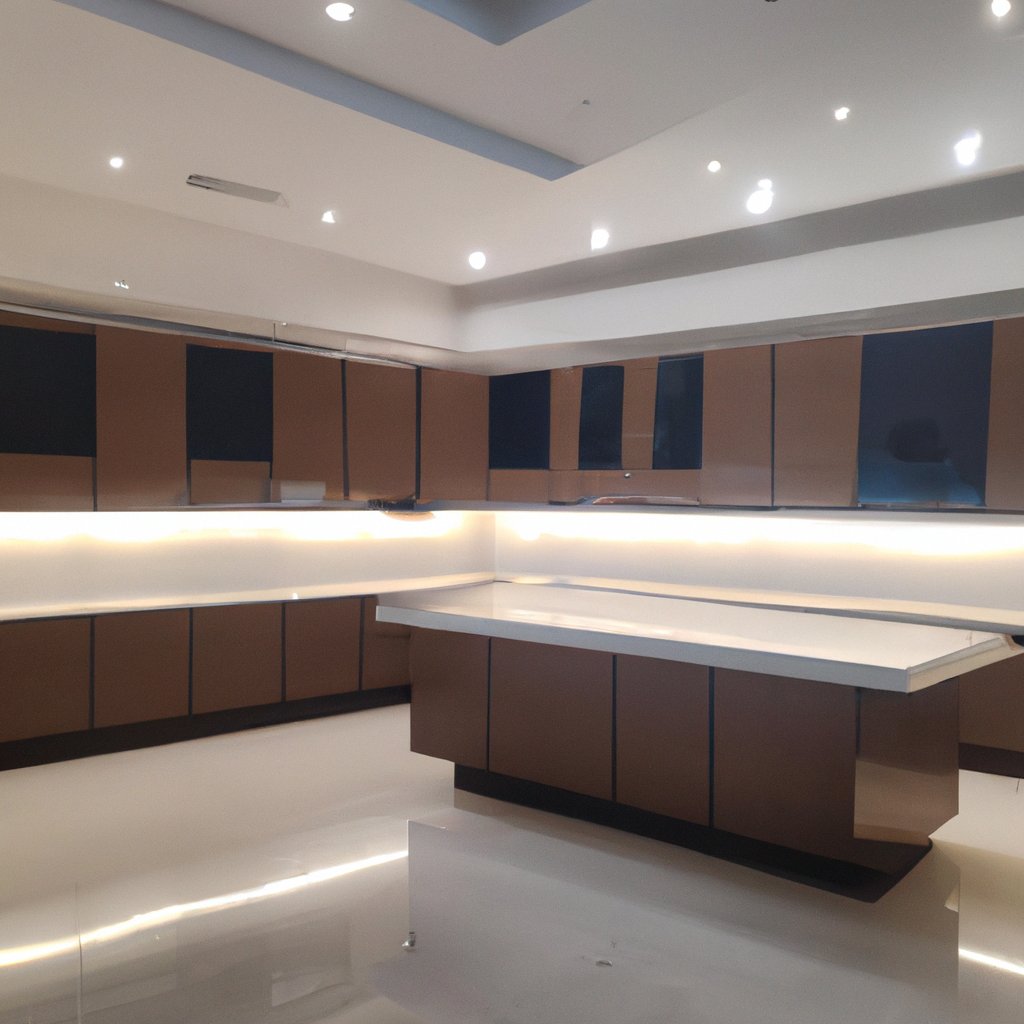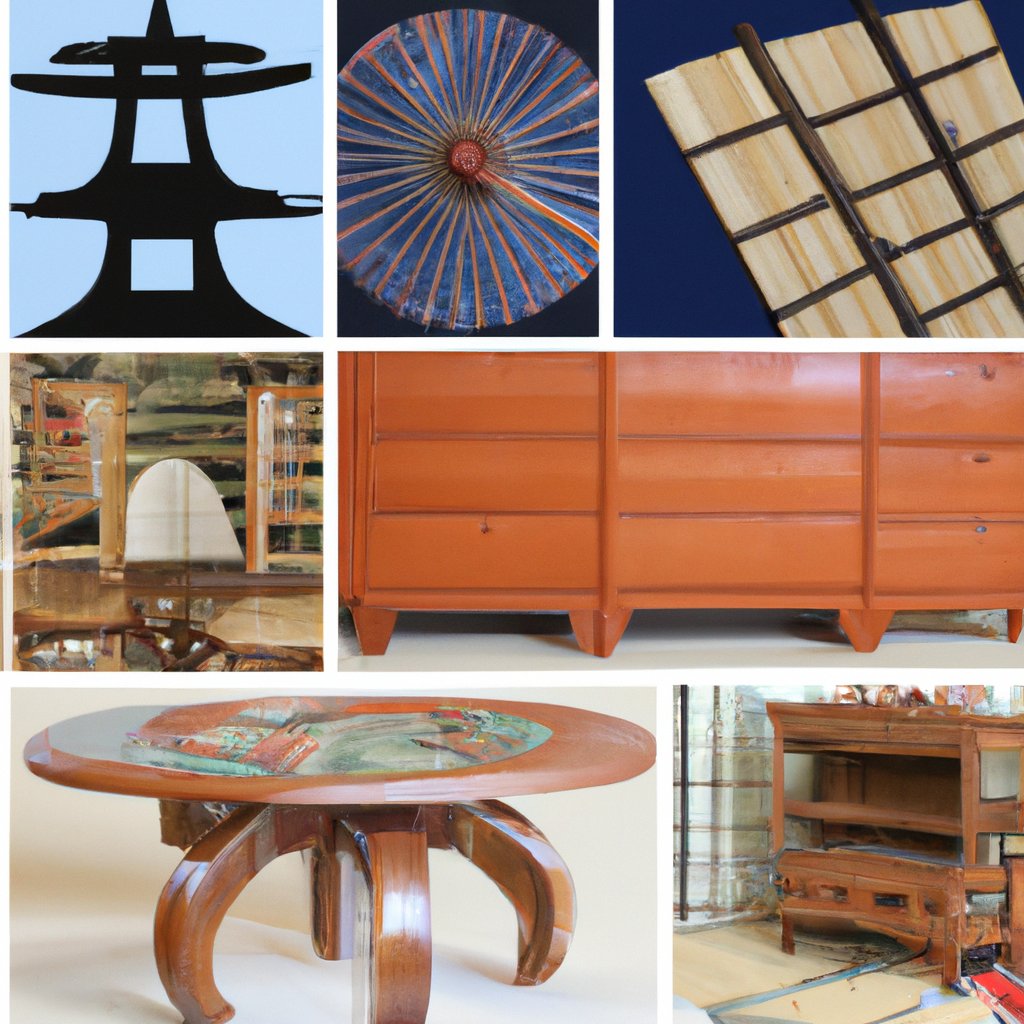
Japandi kitchen design has been gaining popularity among homeowners and designers. Japandi style is a unique design trend that emerged in recent years and combines elements of Japanese and Scandinavian design. This minimalist style emphasizes simplicity, functionality, and natural elements to create a calming and inviting environment in any space.
The Japanese influence is seen in Japandi’s focus on natural materials, such as wood and bamboo, and the use of neutral colors and textures. This emphasis on nature and natural elements promotes a sense of tranquility and relaxation.
Scandinavian design influences Japandi’s focus on functionality, clean lines, and minimalist aesthetics. This design trend emphasizes the use of space, light, and simplicity, creating a sense of order and calm.
Table of Contents
The Rising Popularity of Japandi Kitchen Design
Japandi design has been steadily growing in popularity in recent years, and this trend is set to continue into 2024, especially in kitchen design. This style combines the simplicity and functionality of Japanese design with the warmth and coziness of Scandinavian design, resulting in a space that is both minimalist and inviting.
One reason for the popularity of Japandi design is its emphasis on creating a clutter-free and well-organized space. With the rise of minimalism and decluttering trends, homeowners are increasingly seeking out design styles that prioritize simplicity and functionality. Additionally, Japandi design’s use of natural materials and neutral color palettes creates a calming and peaceful atmosphere in the home, which is especially important in a space as important as the kitchen.
Another factor contributing to the popularity of Japandi kitchen design is the increasing interest in sustainable and eco-friendly design. Japandi design often incorporates eco-friendly materials, such as bamboo or recycled glass, and emphasizes the use of energy-efficient appliances. With concerns about climate change and environmental sustainability on the rise, many homeowners are seeking out design styles that prioritize these values.
The Purpose of the Article
The purpose of this article is to provide readers with an in-depth understanding of Japandi design, particularly as it relates to kitchen design in 2024. We’ll explore the key characteristics of Japandi kitchen design, such as its focus on natural materials, minimalist aesthetics, and functionality, and provide insights into how this design trend is expected to evolve in the coming years.
Our aim is to offer practical tips and inspiration to homeowners and designers looking to incorporate Japandi design into their kitchens, whether through full-scale renovations or small updates. We’ll discuss the latest trends in Japandi kitchen design, such as the use of earthy tones, the incorporation of smart technology, and the integration of indoor plants and greenery.
Ultimately, our goal is to provide readers with valuable insights into the world of Japandi kitchen design, helping them to create a space that is both functional and beautiful and in line with the latest design trends for 2024.
The Elements of Japandi Kitchen Design
A. Color Scheme
The color scheme in Japandi kitchen design emphasizes a neutral palette, typically consisting of white, gray, beige, and black. These neutral tones help to create a calming and inviting environment, while also promoting a sense of order and simplicity. Accents of bold colors can be used sparingly to add visual interest and contrast to the space, creating a sense of depth and personality.
B. Materials
The materials used in Japandi kitchen design play a crucial role in creating the overall aesthetic of the space. Natural materials, such as wood and bamboo, are a central aspect of Japandi design, as they help to create a sense of warmth and comfort in the kitchen.
Wood
Wood is one of the most popular materials used in Japandi kitchen design. It can be used for cabinets, countertops, flooring, and even kitchen utensils. The use of natural wood grain patterns and textures helps to create a connection to nature, promoting a sense of calm and relaxation in the space. Lighter wood tones, such as birch and ash, are popular choices for Japandi kitchens, as they help to create a bright and open atmosphere.
Metal
Metal is another material commonly used in Japandi kitchen design. It can be used for hardware, lighting fixtures, and even countertops. Metal materials, such as stainless steel and copper, provide a sleek and modern look to the space, adding contrast and texture. When combined with natural materials, metal can help to create a sense of balance and harmony in the kitchen.
C. Functionality
Functionality is a critical aspect of Japandi kitchen design. Japandi kitchens are designed to be efficient and practical, with a focus on simplicity, minimalism, and organization.
- Simplicity
Simplicity is a fundamental element of Japandi kitchen design, emphasizing clean lines and minimalistic aesthetics. This approach helps to create an uncluttered and spacious atmosphere in the kitchen, promoting a sense of calm and relaxation. The use of simple, geometric shapes and neutral color schemes also helps to create a timeless and versatile design that can easily adapt to changing trends and personal tastes.
- Minimalism
Minimalism is closely related to simplicity in Japandi kitchen design. The minimalist approach involves the use of only essential elements in the kitchen, with no unnecessary clutter or decoration. This approach helps to create a functional and practical space that is easy to navigate and maintain. In Japandi kitchens, minimalism is achieved through the use of open shelving, streamlined cabinetry, and clean countertops.
- Organization
Organization is a critical component of Japandi kitchen design, as it helps to create a sense of order and calm in the space. Japandi kitchens often feature built-in storage solutions and organizational tools, such as pull-out drawers and lazy susans. These features help to maximize storage space and make it easier to access and organize kitchen essentials. Additionally, the use of natural materials, such as wood, can help to create a warm and inviting atmosphere, while also promoting a sense of organization and simplicity.
Key Features of Japandi Kitchen Design 2024
Japandi kitchen design is constantly evolving, with new trends and features emerging each year. In 2024, several key features are likely to dominate Japandi kitchen design, including:
A. Integration of Technology
As technology continues to play an increasingly important role in our daily lives, it is no surprise that Japandi kitchen design is incorporating more high-tech features. In 2024, we can expect to see more smart appliances and integrated technology, such as touchless faucets and voice-activated lighting. These features not only make the kitchen more convenient and efficient but also enhance the overall design aesthetic.
B. Sustainability
Sustainability has become a key focus in Japandi kitchen design in recent years, and it is expected to continue as a prominent feature in 2024. With a growing concern for the environment, homeowners and designers are increasingly looking for ways to incorporate eco-friendly materials and practices into their kitchen designs.
One way to incorporate sustainability into Japandi kitchen design is by using sustainable materials. This includes materials such as bamboo, cork, and recycled glass. These materials are not only eco-friendly, but they also add unique texture and visual interest to the kitchen design.
In addition to using sustainable materials, Japandi kitchen design in 2024 is likely to incorporate energy-efficient appliances and lighting. LED lighting, for example, uses significantly less energy than traditional lighting and can last much longer, making it a cost-effective and eco-friendly solution. Energy-efficient appliances, such as induction cooktops and refrigerators with Energy Star ratings, can also help to reduce energy consumption and minimize the kitchen’s environmental impact.
Another aspect of sustainability in Japandi kitchen design is waste reduction. This includes incorporating features such as recycling bins and composting systems into the kitchen design to make it easier to dispose of waste responsibly. Additionally, designers may opt for materials and finishes that are easy to clean and maintain, reducing the need for harsh chemical cleaners and minimizing the amount of waste produced.
Incorporating sustainability into Japandi kitchen design not only benefits the environment but also adds a sense of mindfulness and intentionality to the space. By choosing eco-friendly materials and appliances, reducing waste, and embracing energy-efficient solutions, homeowners and designers can create a Japandi kitchen that is not only beautiful but also reflects a commitment to sustainability and responsible living.
C. Mixing of Cultures
The mixing of cultures in Japandi kitchen design can be seen in the use of materials, colors, and textures. For example, a Japandi kitchen may incorporate traditional Japanese materials such as bamboo or shoji screens, while also incorporating Scandinavian-inspired white or light-colored wood finishes. Similarly, a Japandi kitchen may include modern design elements, such as sleek stainless steel appliances or concrete countertops, to add a touch of industrial style.
In 2024, we can expect to see even more mixing of cultures in Japandi kitchen design. This may include incorporating elements from other Asian design styles, such as Chinese or Korean, or blending Japandi design with more traditional European or American design elements. The result is a truly unique and personalized kitchen that reflects the homeowner’s individual style and tastes.
The mixing of cultures in Japandi kitchen design is also reflective of a growing interest in global design and the desire to create spaces that feel authentic and connected to different parts of the world. By blending elements from different cultures, designers and homeowners can create a kitchen that is both beautiful and meaningful, and that celebrates the diversity and richness of different design traditions.
Tips for Achieving Japandi Kitchen Design 2024
A. Selection of Furniture:
When it comes to achieving Japandi kitchen design in 2024, selecting the right furniture is essential. Look for pieces that embody the principles of simplicity and minimalism, such as clean-lined tables and chairs made of natural materials like wood or bamboo. Incorporating a mix of Japanese and Scandinavian styles will help achieve the Japandi look. Consider adding Japanese-inspired floor cushions or Scandinavian-inspired pendant lights to add a touch of personality and texture.
B. Storage Solutions:
Storage is key in achieving a Japandi kitchen design in 2024. Incorporate open shelving made of natural materials like wood or bamboo for a simple and minimalist look. Consider adding hidden storage solutions, such as pull-out pantry shelves, to keep clutter at bay. Opt for storage containers made of natural materials like bamboo or glass, which not only look great but are also eco-friendly.
C. Accent Pieces:
Incorporating accent pieces is a great way to add visual interest to a Japandi kitchen design in 2024. Consider adding a few pops of bold color to an otherwise neutral color scheme with accessories like colorful vases or a statement piece of artwork. Add texture with natural materials like woven placemats or rattan trays. Additionally, consider adding live greenery, such as a small herb garden, to bring a touch of nature into the space.
D. Appliances:
When selecting appliances for a Japandi kitchen design in 2024, opt for simple, sleek designs with clean lines. Look for appliances that are energy-efficient and made of eco-friendly materials, such as stainless steel or recycled glass. Consider incorporating smart home technology, such as a smart refrigerator or induction cooktop, for added convenience and energy efficiency.
E. Lighting:
Lighting is an essential component of Japandi kitchen design in 2024. Incorporate natural light as much as possible by adding windows or skylights. Choose lighting fixtures with a simple, clean design and warm, inviting light. Consider adding dimmer switches to create a cozy, intimate atmosphere in the evening. LED lighting is also a great option, as it is energy-efficient and long-lasting.
Future of Japandi Kitchen Design
As Japandi design continues to gain popularity, we can expect to see more innovation and creativity in Japandi kitchen design in the future. With advancements in technology and a greater focus on sustainability, we may see more smart home technology integrated into Japandi kitchen designs, as well as an emphasis on using eco-friendly materials. Mixing of cultures may also continue to play a role in Japandi design, with designers incorporating elements from other cultures to create unique and personalized spaces.
We may also see a shift towards more functional and multi-purpose kitchen designs, as homeowners prioritize practicality and versatility in their kitchen spaces. This could include the integration of modular furniture or flexible storage solutions, as well as the use of adaptable lighting and smart home technology.
Overall, the future of Japandi kitchen design looks bright, with a continued focus on simplicity, minimalism, and functionality, combined with an increasing emphasis on sustainability and a mixing of cultures. As homeowners continue to prioritize their kitchen spaces as both functional and aesthetically pleasing, Japandi design offers a timeless and versatile approach to kitchen design that is sure to remain popular for years to come.
Importance of a Well-Designed Kitchen
A well-designed kitchen is essential to any home. Not only is the kitchen a central gathering place for families and guests, but it is also a functional workspace where meals are prepared, eaten, and enjoyed. A well-designed kitchen can make cooking and meal prep more efficient and enjoyable, while also adding value to the home.
A Japandi kitchen design, with its emphasis on simplicity, minimalism, and functionality, can be particularly beneficial for homeowners. By creating a clutter-free and well-organized space, Japandi design can help to reduce stress and create a calming atmosphere in the kitchen. Additionally, the use of natural materials and a neutral color palette can create a timeless and sophisticated look that is sure to impress guests and potential buyers.
Recap of Key Points
- Japandi kitchen design is a fusion of Japanese and Scandinavian design, characterized by simplicity, minimalism, and functionality.
- The popularity of Japandi kitchen design is on the rise due to its timeless and sophisticated look, as well as its emphasis on sustainability and eco-friendliness.
- Key elements of Japandi kitchen design include a neutral color scheme with bold accents, natural materials like wood and metal, and an emphasis on simplicity and organization.
- In 2024, we can expect to see more mixing of cultures in Japandi kitchen design, as well as a focus on integrating technology, sustainability, and texture/contrast.
- Tips for achieving Japandi kitchen design in 2024 include selecting furniture with clean lines, incorporating storage solutions, adding accent pieces, choosing energy-efficient appliances, and incorporating natural light.
- A well-designed kitchen is important for both functionality and aesthetics, and Japandi design can help create a clutter-free and calming atmosphere in the kitchen while adding value to the home.
The use of natural materials and live greenery can add texture and bring a touch of nature into a Japandi kitchen design. - Lighting is an essential component of Japandi kitchen design, with a focus on incorporating natural light as much as possible.
- Japandi design emphasizes sustainability, with a focus on using eco-friendly materials and energy-efficient appliances.
- The future of Japandi kitchen design may involve more mixing of cultures and integration of technology, while still maintaining its core elements of simplicity, minimalism, and functionality





Pingback: Discover The Serenity Of Japandi Living Room